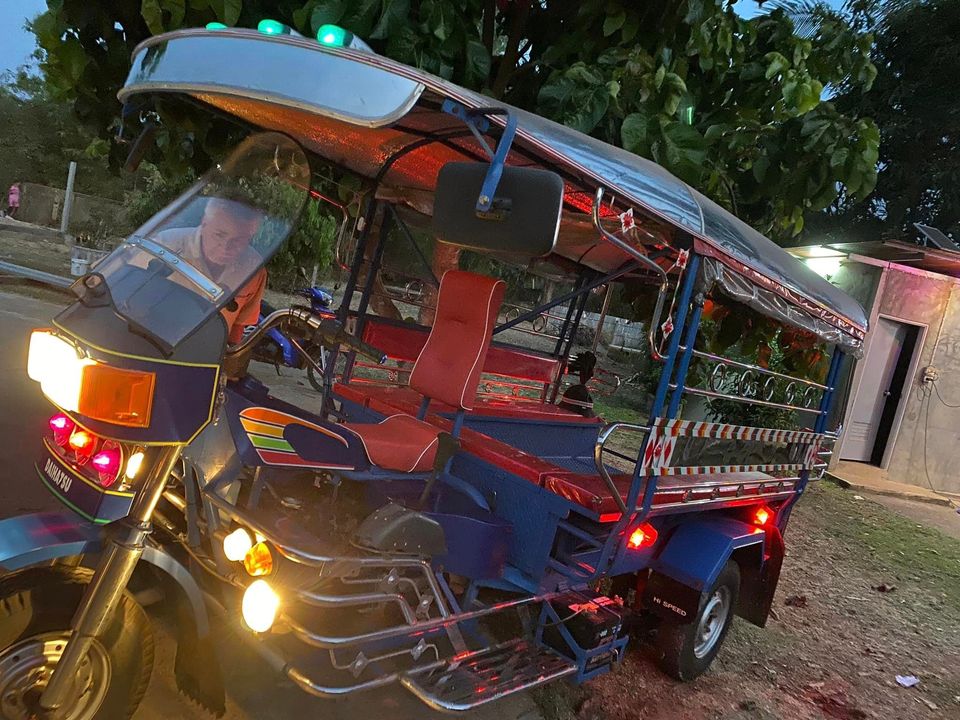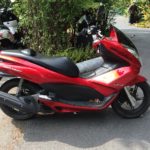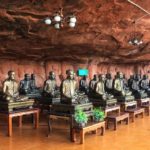
The Isaan Samlor or Skylab Tricycle of Northeast Thailand

The most iconic vehicle of Isan (Northeastern Thailand) is the “samlor,” a colorful three-wheeled motorcycle with a cab in the back. Some people refer to samlors as tuk tuks, the three-wheeled taxis popular in Bangkok. But samlor is the name most commonly used by locals, with tuk tuk being reserved for the two-stroke engine Thai taxis that have an auto rickshaw front end. Pedicabs or tricycle pedal taxis with a cab in the back (like you see in downtown Sakon Nakhon) can go by either name. There are also motorbike samlors that differ in style from the Isaan samlor that are called “rot samlor kreuang” (รถสามล้อเครื่อง), which translates to three-wheeled engine vehicle.
The Isaan/Isan samlor (รถสามล้ออีสาน) has an interesting history. The first of these motorized trikes was built in 1978 in the Northeastern Thai province of Udon Thani, which today still has many of the best-known samlor builders. A pedicab driver in Udon had become too old to pedal his taxi around anymore, so he asked a local garage to modify his tricycle to include an engine. The garage had never done such a thing before, but succeeded in the new design and the Isaan Samlor was born.
The colorful Thai samlors were an immediate hit, especially among other pedicab drivers who were jealous of how quickly their friend could now transport customers around Udon Thani. The engine powered trycicles looked so unique and “out of this world” that they became known as “Skylab Cars” (รถสกายแลป) in 1979, when the United States’ first space station, Skylab, came crashing down to earth.
These first two-seater samlors (pronounced sahm-law) had engines of 90-120 CC. Today’s samlors, which have two opposing rows of seats carry up to 4 adults, usually have engine sizes of 130-150 CC and sell for around 65,000 baht or 1,900 USD. There is also a large samlor made with a 650 cc Daihatzu engine that seats 4-8 people and retails for about 120,000 baht or 3,500 USD. This large Thai tricycle is seen as somewhat of a status symbol in rural Isaan and only a few farmers have them.

Does a Thai Samlor Need to be Registered?
The Isaan samlor is used as a farm vehicle, and for ferrying children and family members around the village and nearby communities. Most samlors are not registered with Thailand’s Department of Land Transportation (The Thai DMV). Police in general will not fine owners for their lack of registration, as long as they don’t drive the samlor in the city center or too far away from home.
There is a mistaken belief among some people that the Thai samlor doesn’t need to be registered. But it most certainly does to be a fully legal road vehicle. A driver risks a fine if they get get stopped at a police road block. However, fines are often only around 200 baht, so most samlor drivers take the risk.
The samlor is used as a taxi in only a few communities in Northeastern Thailand, such as in Maha Sarakham. Some communities, such as Sakon Nakhon, ban their use (and all motorized tuk tuks) in the downtown due to noise pollution. Such city bans are a good thing, because the Isaan samlor (like the Bangkok tuk tuk) is a loud vehicle! When the samlor is used as a taxi, then people may refer to it as a tuk tuk. Some local governments have begun to enforce registrations and safety training for Thais who want to use their samlor as a taxi.
In 2019, the samlor got a 21st century update when researchers built an “E-Skylab” prototype, refitting the colorful Thai trike with two electric motors powered by two sets of four 12V-80Ah batteries. In performance tests with maximum loads, the E-Skylab samlor could carry up to 500 kg, traveled 42 km on a single charge at average speed of 20 km/h, and had maximum speed of 36 km/h.
One suspects that it’s still quite a while off before we start seeing lots of electric samlors buzzing around the roads of Northeast Thailand. In the meantime, the traditional samlor remains a sturdy motorized triycycle, with tires more durable than an ordinary motorcycle. It is cheaper than a pickup truck but can be used for many of the same tasks. It also saves the owner gas money compared to a Thai pickup truck. Add to that its iconic, colorful look, and it is no wonder the samlor’s popularity now extends to provinces throughout Thailand, as well as other countries in Southeast Asia.
- Monogamy and the Mia Noi in Thailand - April 27, 2024
- How to Greet a Monk in Thailand – Saying Hello - April 22, 2024
- Hottest Place in Thailand – Record High Temperature 2024 - April 22, 2024




